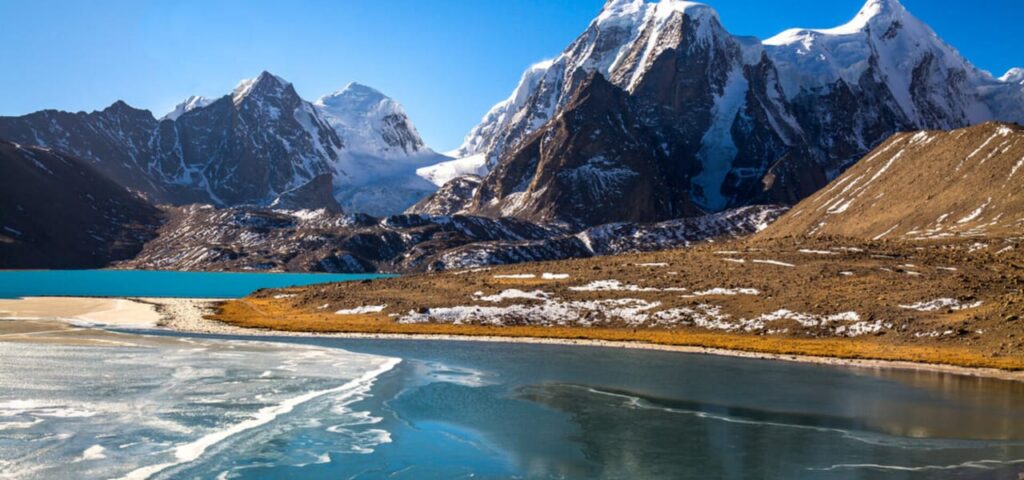
Nestled at an astonishing altitude of 17,800 feet in northern Sikkim, Gurudongmar Lake stands as one of the world’s highest and most visually breathtaking lakes. Flanked by the majestic snow-capped Himalayas and expansive glacial landscapes, the lake is not only a geographical marvel but also a spiritual haven revered across religious traditions. Named after Guru Padmasambhava, the 8th-century Buddhist saint, Gurudongmar is a destination that draws pilgrims, travelers, photographers, and adventurers seeking its serenity and mystique.
The lake gained fresh attention after industrialist Anand Mahindra shared a captivating photograph taken by former Indian Navy pilot Capt. Sumit Bhatnagar. Mahindra described the image as a “surreal vision”, pairing it with a poetic quote from Rabindranath Tagore. “In the mountain, stillness surges up to explore its own height; in the lake, movement stands still to contemplate its own depth.”
His post stirred widespread admiration, bringing global focus to this remote Himalayan treasure. Mahindra’s words captured the lake’s tranquil grandeur and profound emotional and spiritual resonance.
🌄 A Sacred Site Shrouded in Legend
The name Gurudongmar pays homage to Guru Padmasambhava, often referred to as the Second Buddha in Tibetan Buddhism. According to legend, the lake was once completely frozen year-round, cutting off access to water for local inhabitants. The Guru is believed to have blessed the lake during his visit, miraculously ensuring that a section of it remains unfrozen, even in the harshest winters. This miracle transformed Gurudongmar into a sacred pilgrimage site, revered by Buddhists, Sikhs, and Hindus alike.
For Sikh devotees, the lake also holds spiritual significance due to its association with Guru Nanak, further enhancing its religious importance. Many visitors collect water from the lake, which is believed to have healing properties and divine energy.
🏞️ Ecological Significance of Gurudongmar Lake
Beyond its spiritual reverence, Gurudongmar plays a crucial ecological role in the region. Fed by glacial melt from the surrounding peaks, its waters flow into the Tso Lahmu Lake, eventually forming the Teesta River. It is a major waterway that sustains agriculture, hydropower, and the drinking water supply across Sikkim and parts of West Bengal.
Though it may seem modest in scale compared to the rugged terrain around it, the lake stretches across a vast expanse. Its turquoise waters and ever-changing hues reflect the stark, dramatic beauty of the high-altitude desert. However, at this elevation, oxygen levels are low, making the journey physically demanding and limiting the presence of wildlife.
✈️ How to Reach Gurudongmar Lake
Location: North Sikkim, near the Indo-Tibet border
Base Town: Lachen – about 7–8 hours’ drive from Gangtok
Permits Required: Indian nationals must obtain permits via local travel agents; foreigners are not allowed due to border Sensitivity best Time to Visit: April to June and October to early November (roads are inaccessible in winter due to heavy snow)
Travel Tips:
Acclimatize in Lachen before heading to the lake.
Carry warm clothing, oxygen cans, and essential medicines.
Avoid overexertion and stay hydrated due to the high altitude.
Thanks to a striking image and a thoughtful quote shared by Anand Mahindra, Gurudongmar Lake is now receiving the recognition it richly deserves—not just as a scenic destination, but as a place of depth, spirit, and story. Whether you’re a nature lover, spiritual seeker, or photography enthusiast, this Himalayan wonder offers an unforgettable experience.
